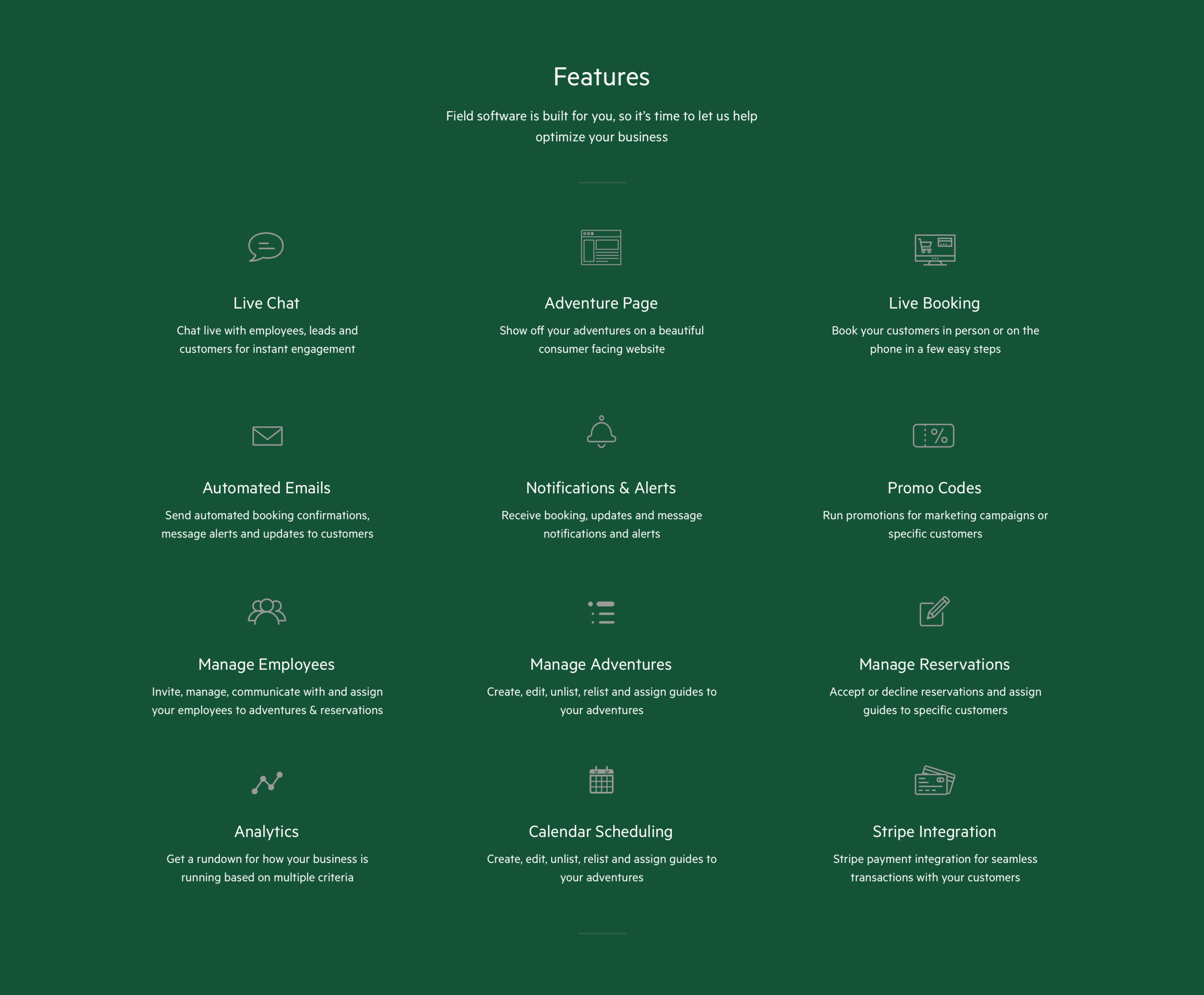
Field

The Problem
Following our initial release of Hinterlands, we became very close to the guide outfitters (supply side) we brought to the platform. I guess you could say we even became friends. While we constantly communicated with them, we started to notice some common themes in how they were managing their business, their adventures, their guides, and their overall operations/sales.
After further research and customer development, we came to the conclusion that on top of wanting to bring in new business and revenue, they needed better, more modern B2B platform to manage operations behind the scenes.
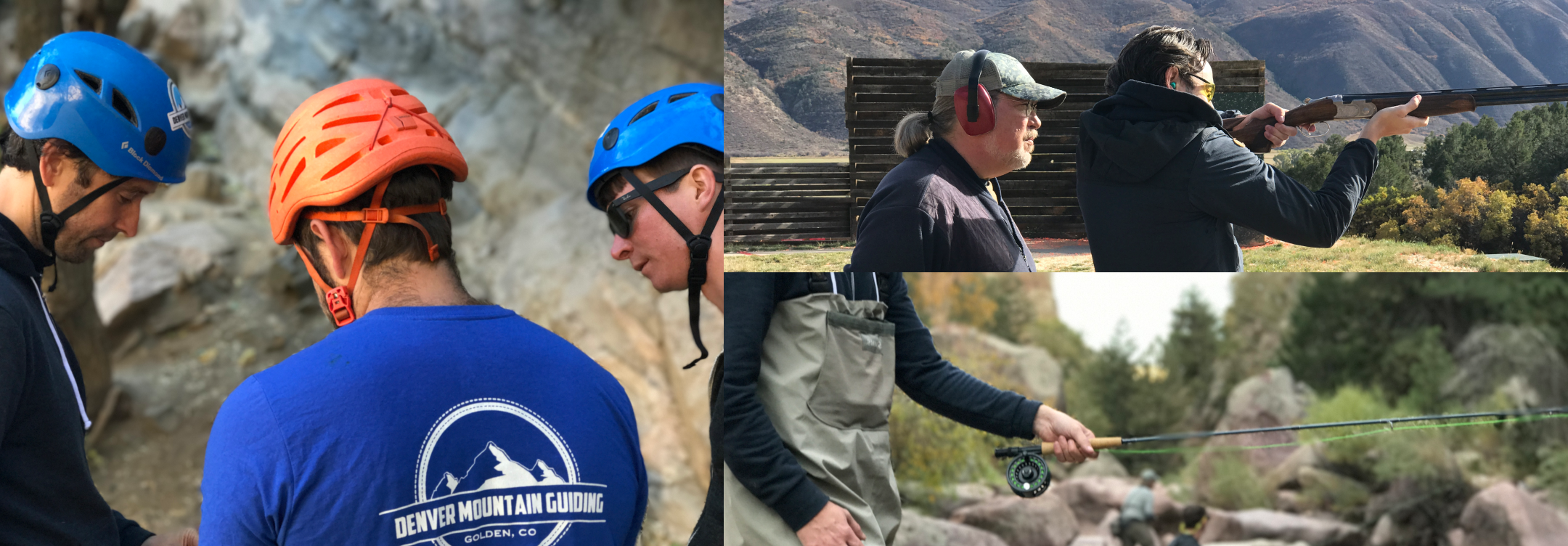
The Solution
What better way to further understand a customer’s problems than to go to where they operate and observe everything they do, offer, and who they work with. At the same time, it was a blast not only hanging out with these folks in their offices, but also going on the adventures they offer.
This intense customer development and user research led us to further validate that these guide shops need better ways to manage their business and customers. After returning we set off on a journey to provide them with just that.
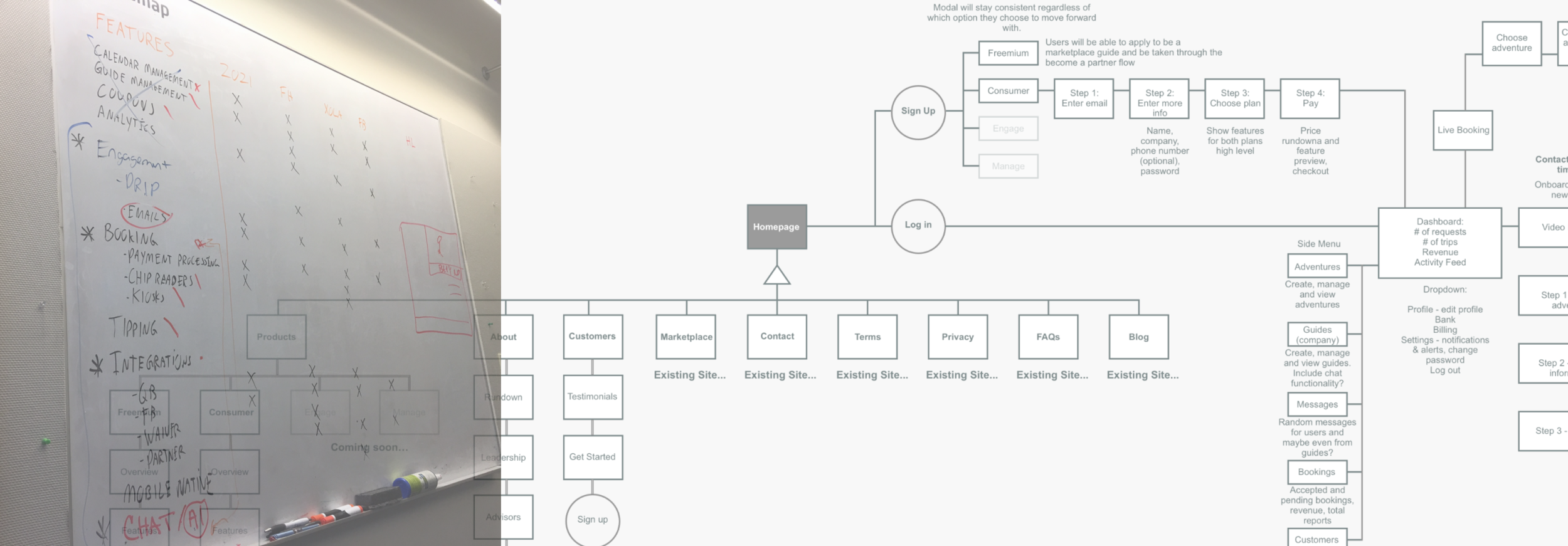
Strategy and Planning
Following our return to the office, we had way too many ideas brewing. In an effort to not overwhelm ourselves, we conducted a bunch of research around competitors (direct/indirect), pricing strategies, overall travel management landscape, and what is the overall user journey for our current and potential customers.
After ample research and a few more phone calls, we put together a rough IA and started discussing what a testable prototype might look like.
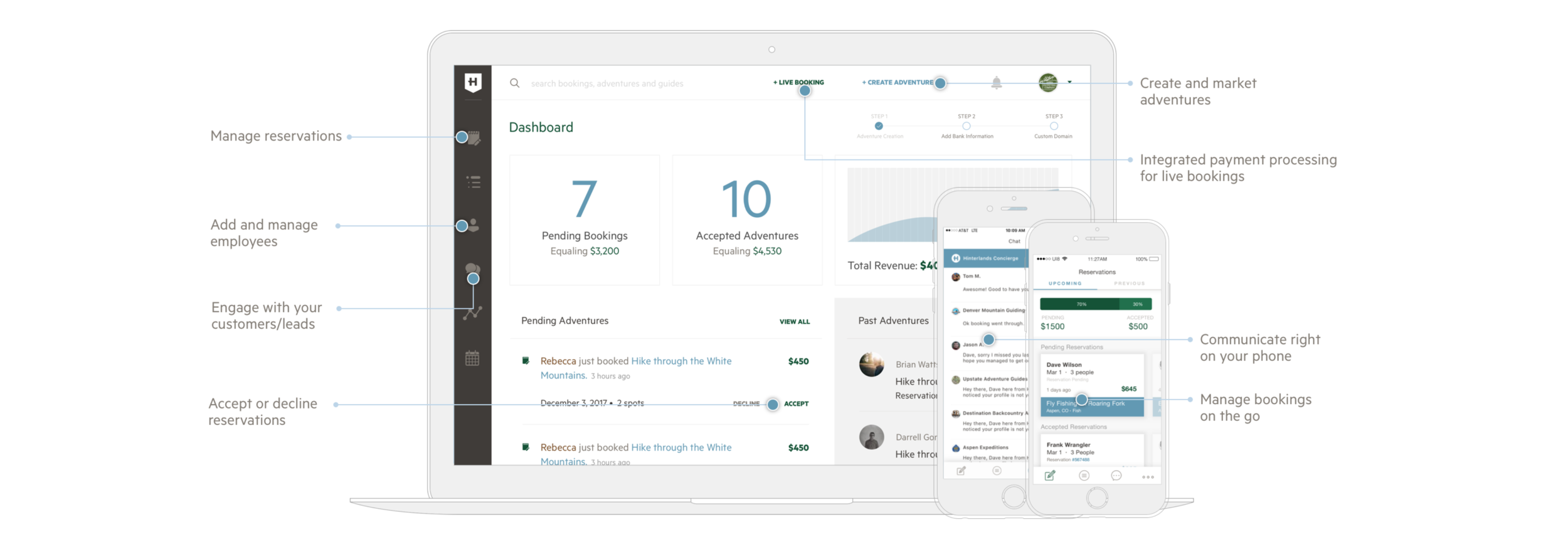
Guide Dashboard
We started with lo-fidelity wireframes to make sure we were on the right track with our customers. Once we validated the direction, it was time to start designing a hi-fidelity prototype in InVision that we could collect some early feedback on prior to implementation.
A few rounds of customer sessions later, and we were ready to start decomposing the work into digestible chunks for engineering.
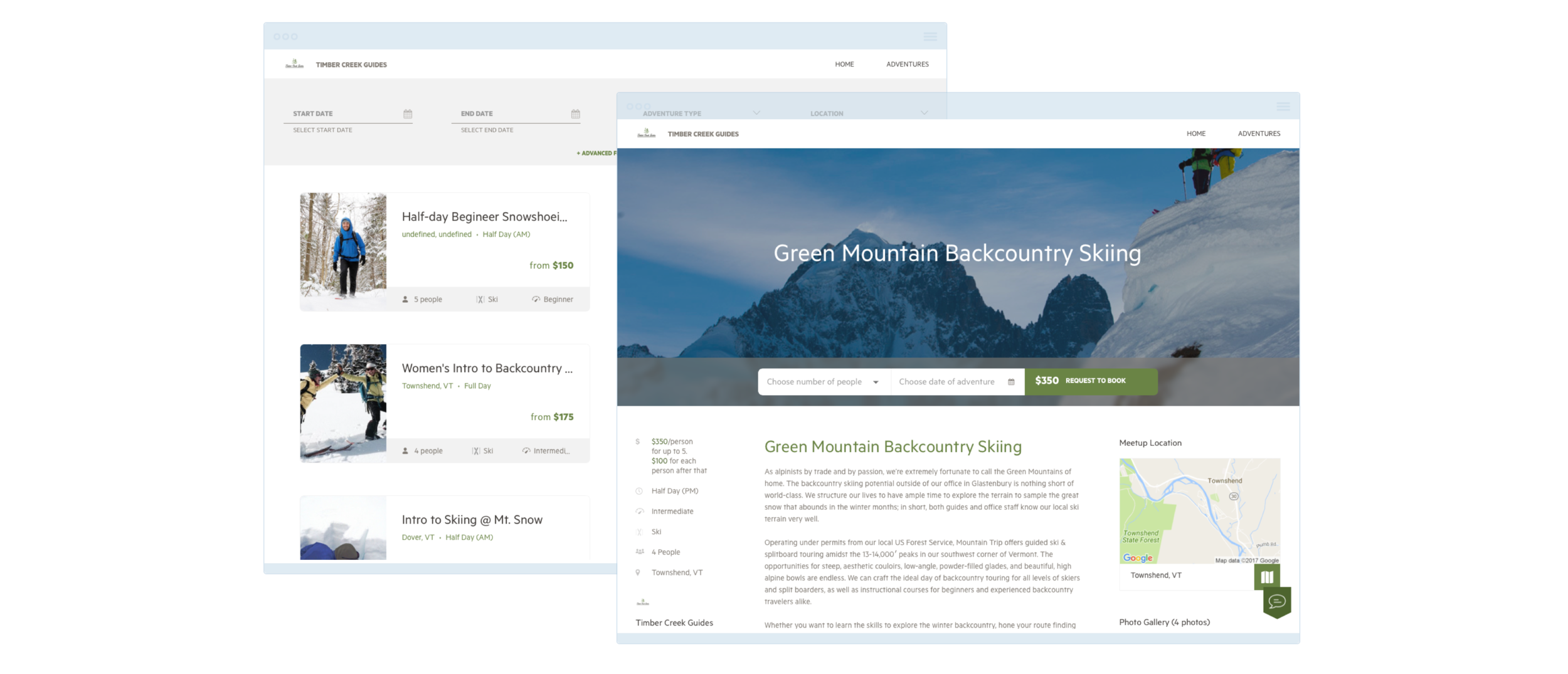
White Labeled Adventures
One of the biggest problems we identified early on aside from overall operations issues, was the fact that they shops had no idea how to market themselves or their adventures properly. As part of the initial release, we made it a priority to focus on the best way to help them stand out amongst the crowd.
What adventures they built in the backend were now marketed in these whitelabeled landing pages. On top of the landing pages, we also built out seamless booking workflows to eliminate friction of adventure seekers.
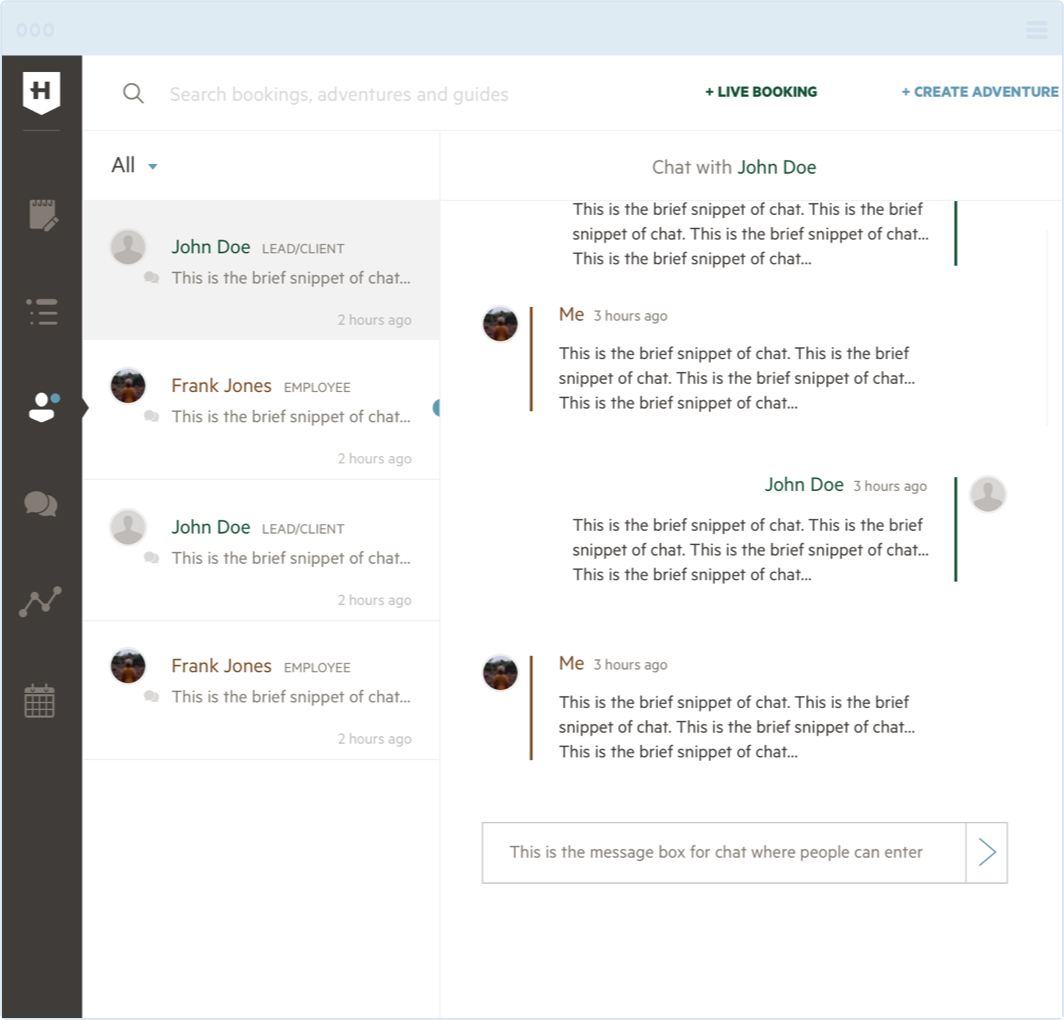
Live Chat
Communication was so important between guides and their customers. That said, most of the time they were relying on their phones for this communication. We brought communication into the platform so customers can ask about their upcoming adventures, inquire about new adventures, and stay in touch in case questions come up along the way.
The business owner was now able to have visibility into common questions, turnaround times, and overall number of inquiries.
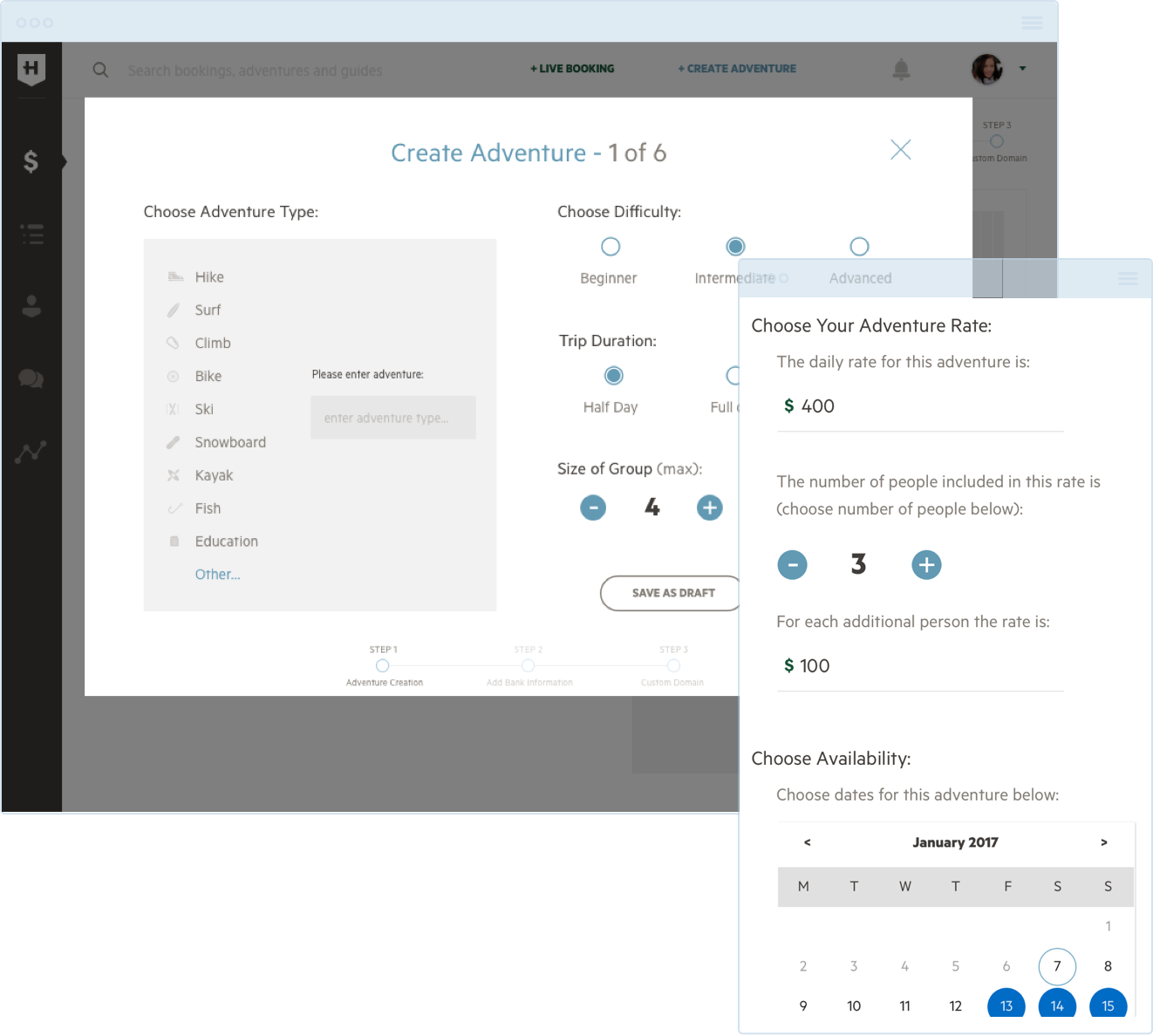
Adventure Creation Workflow
Seamless adventure creation was really important to our customers because of the limited time they had. We built out an end to end, 6-step adventure creation workflow so customers can create new adventures in minutes.
All adventures created were tied to their whitelabeled adventure landing pages. This allowed them to choose and manage date availability, assign guides, meetup locations, adventure type, pack lists and any other additional notes their customers need to know before booking.
